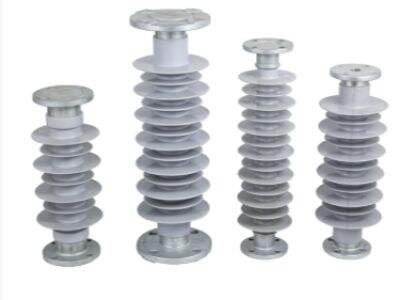When you turn on the lights in your house or your classroom, you might not always realize how it safely gets to us. We take for granted that when we flick a switch, the lights come on. But behind this simple act is a complex system that makes sure electricity flows smoothly and safely. This is where polymer insulators become very helpful. These essential devices, known as circuit breakers, are vital for maintaining smooth electricity flow and protecting our well-being. In the first part of the article, we will talk about how these insulators are made, the new technologies used in their manufacturing process, how we test their quality to ensure safety, the environment and its significance in the respective process, and the advantages and disadvantages of using these Insulator in electrical systems.
How Polymer Insulators Are Produced
The process of manufacturing polymer insulators begins by mixing different materials, silicone rubber, and fiberglass. To these materials are set up a robust and durable product that copes with the streams of force. This blending exercise is important because it guarantees that the insulators will be able to endure the pressures they would see in real-life scenarios. The merged materials are then molded into shapes — from tiny parts to large towers that support power lines. Once shaped, the Semi finished insulator are tested to ensure that they’re able to withstand both electricity and the wear-and-tear caused by extreme weather, such as heavy rain or strong winds. Once they perform successfully on all tests, they're prepared to be installed in electrical systems, helping to keep our homes and schools powered safely.
Polymer Insulator Manufacturing with New Technologies
Manufacturers employ many different and some even innovative technologies to create the best insulator they can make and make it better than the last. One of the most common techniques is known as injection molding. Rather, this is a process which involves forcing molten material into a mold that shapes the insulator. It enables precise designs, assisting to ensure that insulators are manufactured correctly and consistently. The UV stabilization, another critical used technology to produce polymer Pin Insulator. This is really critical technology because this protects the insulators from degradation for long duration of laminating due to sunlight. With this protective armor, the core of the insulators remains soft and fluffy, almost like cotton fiber, making them extremely powerful and effective.
Why Quality Control Matters
The production process of polymer insulators, quality control is one of the key aspects. So it helps to ensure that each insulator is safe and effective before it is put to use. We do extensive testing in every state of our manufacturing process. That means insulators are inspected closely to ensure they conform to all safety and performance specifications. Quality control catches these mistakes before the insulators go into electrical systems. This allows us to ensure that the insulators are functioning correctly and protecting us.
Caring for the Environment
And as we are learning more about Now, the importance of being responsible and sustainable means companies can no longer ignore this fact. Polymer insulator producers make an effort to use recycling materials as much as possible. They are eco-friendly, as they use recycled components that would otherwise end up in landfills and help protect the environment in the process. Also, these insulators have a long-lasting useful life, so they shouldn't have to be replaced as often as some other electrical components. Not only does this longevity save the planet, but it also saves you money over time: a win-win situation.
The Economics of Costs and Benefits
So although polymer insulators may have a higher initial cost than traditional insulators, they provide numerous cost-saving advantages over time. The biggest advantage is that they need less maintenance, because polymer insulators can last many years without needing repairs or replacements. This means less costs on repair and replacement. Additionally, polymer insulators weigh less than conventional insulators, which can lead to decreased transportation costs. This light weight makes it easier to move them to where they will be used and to save more money. Finally: Polymer insulators outperform all other insulator types; The intricate interactions between these biological components drive enhancements in organism performance, including prevention of system failures and reduction of energy costs.














































